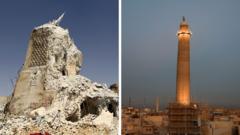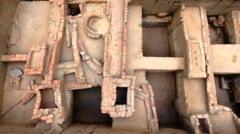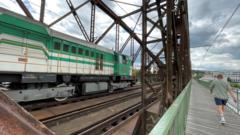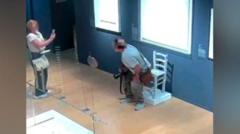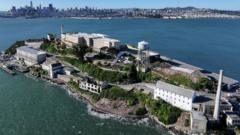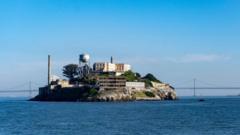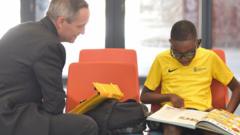In an inspiring revival, the historic city of Mosul, Iraq, is slowly coming back to life after years of destruction by the extremist group ISIS. Famous landmarks, including churches and mosques, are being reopened as part of a reconstruction initiative led by UNESCO, which commenced following the city’s liberation in 2017.
UNESCO Director-General Audrey Azoulay is set to participate in a ceremony to celebrate this milestone, underscoring the collaborative efforts of local artisans, residents, and diverse religious communities in reconnecting and rebuilding their city.
Once a symbol of cultural coexistence, Mosul fell under ISIS control in 2014, leading to significant human suffering and loss of heritage. The group notably targeted minorities and destroyed notable structures, including the iconic al-Hadba minaret. In response, a coalition effort facilitated a military campaign to reclaim the city, resulting in extensive destruction but ultimately liberating Mosul from its oppressors.
Ali al-Baroodi, a local photographer, recalled the devastation, describing the sight of the once-majestic al-Hadba minaret as haunting. In the aftermath, efforts to restore not just buildings but also community bonds have taken precedence.
Since the start of the restoration, over $115 million has been allocated for the project, with significant support from the UAE and the EU. Dominican Father Olivier Poquillon emphasizes the importance of rebuilding trust among varied communities, as collaboration is essential for a lasting recovery.
Architect Maria Rita Acetoso, overseeing restoration efforts, highlights that this initiative fosters job creation and restores a sense of identity and hope for younger generations. More than 1,300 local youths have gained training in traditional skills, with thousands of jobs created, reflecting a revitalizing process in both the physical and social landscapes of Mosul.
The townspeople have started to return to their restored homes, with residents expressing joy at the revival of their precious heritage. The Old City, despite its scars, symbolizes a hopeful future, as encapsulated by al-Baroodi’s observation—Mosul is akin to a "dead person coming back to life" in an immensely beautiful way. The revival of this city continues to inspire resilience among its people.

